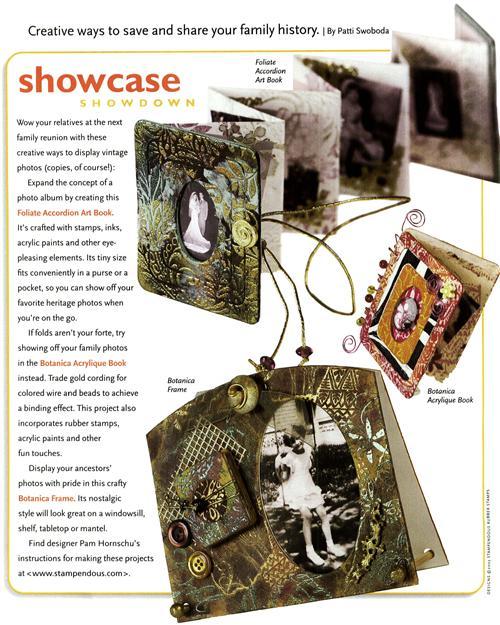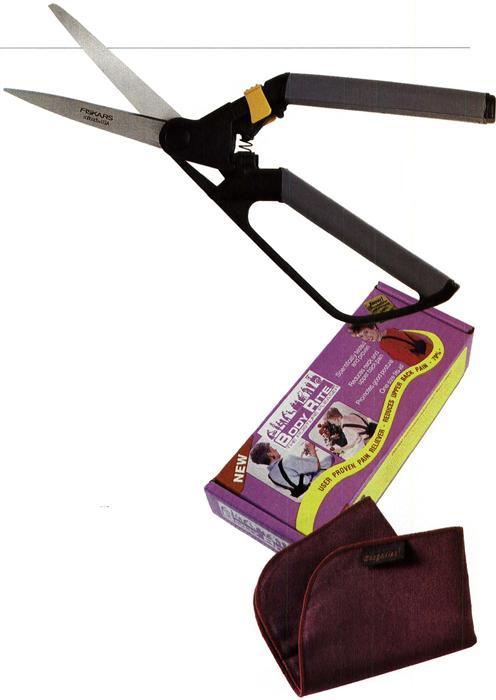Sign up for the Family Tree Newsletter Plus, you’ll receive our 10 Essential Genealogy Research Forms PDF as a special thank you!
Get Your Free Genealogy Forms
"*" indicates required fields

Aching for the past
Before the late 1800s — when the light bulb began illuminating Americans’ homes — our ancestors relied on daylight, candlelight and oil lamps to read, write and craft. Luckily, we don’t have to strain our eyes with dim, flickering lights today. Still, the long hours we spend hunching over heritage-album layouts, poring over library books and researching on the computer take their toll on our bodies. Unlike our ancestors, though, we have tools to fight those aches and pains. These ergonomic products provide a healthier way to practice your craft:
• Forget that arthritis runs in your family — you’re not doomed to cramping hands when cropping paper and pictures for your heritage album. Left-or right-handed scrapbookers can cut painlessly with Fiskars’ Softouch Multi-Purpose Scissors. A spring-action mechanism makes opening and closing the scissors easy; rubber grips reduce friction. Softouch scissors can cut a variety of materials, including foils and thin metals. Each pair sells for about $20. (800) 950-0203, <www.fiskars.com>
• You won’t enjoy your ancestor hunt if you’re sore from slouching over genealogical records. Banish back pain with Body Rite, an ergonomic posture aid. Wear this device while working on family history scrapbooks or tracing your roots online. A 2- or 3-pound counterbalance prevents muscle strain in the shoulders, neck and arms. Body Rite retails for $39.95. (800) 210-6662, <www.mageyes.com>
• Having trouble reading the details of the 1810 census? Stop squinting and grab MagEyes. It’s a head-mounted magnifier used by professionals, crafters and hobbyists. MagEyes prevents tired eyes by providing distortion-free viewing with maximum clarity. The cushioned slip-on headband fits comfortably and won’t pull your hair. Your hands are free to reach for a scrapbook tool, operate a keyboard or write notes to document your heritage. Prices range from $31.95 to $39.95, depending on the lens strength you need. (800) 210-6662, <www.mageyes.com>
• Keep those eyeglasses, magnifiers and computer screens clean with Googalies, a highly absorbent 8×8-inch cloth made out of the finest microfiber. Wipe away finger smudges on your ancestors’ photos, as well as glass surfaces. It costs $7.95. (888) 488-8400, <www.googalies.com>
Scrapbooking Q&A: Healthy habits
Q. What is ergonomics, and what does it have to do with preserving my family history?
A. Ergonomics is the study of people and their working environment. It identifies specific aspects of a work area that are linked to injuries. Businesses use ergonomics programs to eliminate health risks and promote safe practices among their employees.
But ergonomics doesn’t relate only to work. Genealogists and scrappers also need to pay attention to their working environment and habits. When you bend your neck forward for long periods of time — to lean over records or scrapbooks, for example — you could develop awkward posture or feel neck and shoulder pain. Roots research can be hard on the eyes, too: Glare from a computer screen and inadequate lighting strains your vision, sometimes causing headaches. Be wary of repetitive motions, such as cranking the handle of a microfilm reader over and over; these also can cause physical harm.
Such problems aren’t difficult to combat, though. For example, stretching is an easy and effective way to fight physical tension and strain. Beth Johns, a physical therapist who treats patients suffering from work-related injuries, recommends taking frequent breaks to stretch. “It’s too easy to lose track of time when you are working,” says Johns. “But an egg timer set for 20 minutes will remind you to get up and stretch.”
In addition to practicing healthy habits, try using ergonomic products such as the ones at left. Try a magnifying glass to ease the strain on your eyes when you’re reading fine print. Look for scissors that are specially designed to reduce the amount of pressure required for cutting. Diminish glare on your computer monitor with one of the special screens available at office-supply stores. Make sure you have adequate lighting in your workspace; plug in an extra lamp if you need to.
Don’t let your family history research become a pain — sit up straight, adjust your surroundings and learn more about ergonomics by visiting <www.ergoweb.com>.
From the April 2003 issue of Family Tree Magazine.
ADVERTISEMENT


